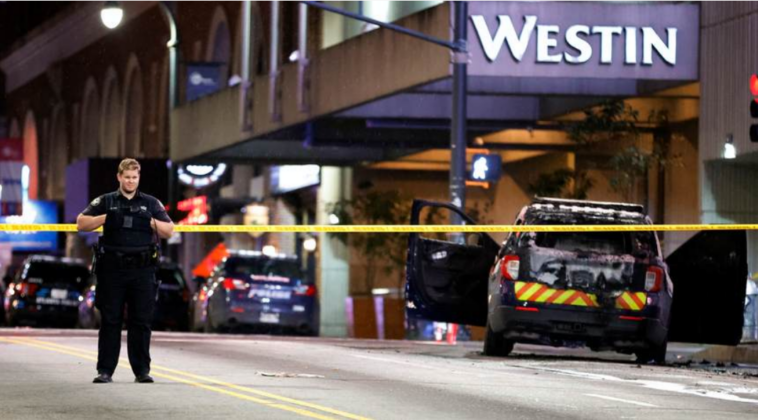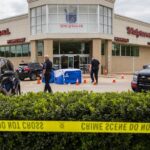Back in 2020, when crime rates spiked dramatically in many cities across the country, anti-gunners were quick to pin the blame on the sharp increase in gun sales rather than the defunding of law enforcement, closures of many court systems, riots inspired by the death of George Floyd in Minneapolis, and general societal chaos caused by the COVID-19 pandemic and the government response. Crime was increasing at the same time more guns were being sold, so the two must be connected.
If that were the case then we’d expect to see more crime each and every month, since more than a million firearms are being sold at retail per month, according to the National Shooting Sports Foundation. Instead, as crime analyst Jeff Asher reports at The Atlantic, 2023 could end up seeing the biggest one-year decline in homicide rates in decades.
The United States may be experiencing one of the largest annual percent changes in murder ever recorded, according to my preliminary data. It is still early in the year and the trend could change over the second half of the year, but data from a sufficiently large sample of big cities have typically been a good predictor of the year-end national change in murder, even after only five months.
Murder is down about 12 percent year-to-date in more than 90 cities that have released data for 2023, compared with data as of the same date in 2022. Big cities tend to slightly amplify the national trend—a 5 percent decline in murder rates in big cities would likely translate to a smaller decline nationally. But even so, the drop shown in the preliminary data is astonishing.
… Murder is down 13 percent in New York City, and shootings are down 25 percent, relative to last year as of late May. Murder is down more than 20 percent in Los Angeles, Houston, and Philadelphia. And, most significantly, murder is down 30 percent—30 percent!—or more in Jackson, Mississippi; Atlanta, Georgia; Little Rock, Arkansas; Minneapolis, Minnesota; Milwaukee, Wisconsin; and others.
The decline in homicides is being seen in both cities with extremely restrictive gun laws like New York City as well as urban centers in permitless carry states like Texas, Georgia, and Arkansas, so as much as anti-gunners would love to be able to credit post-Bruen carry restrictions, bans on so-called assault weapons, and other anti-2A infringements for the steep drop in homicides, that’s not the case.
So what is going on? Asher has some suggestions, but says it’s difficult to know what’s driving the decline.
The national nature of both the surge in murder in 2020 and the apparent decrease this year suggests that national explanations will be more convincing than local anecdotes. Moreover, the factors that caused murder to begin to spike in the summer of 2020 may not be the same factors (now, theoretically, in reverse) that are contributing to its decline in 2023.
“It is possible that police departments have returned to some of the proactive work that they curtailed during the COVID pandemic and after George Floyd, activities that may be inhibiting some gun violence,” Jerry Ratcliffe, a criminal-justice professor at Temple University in Philadelphia, told me. In Baltimore, for example, a new effort to focus policing resources on the small subset of the population that is believed to be responsible for a disproportionate share of violence has produced promising initial results.
Many cities have used federal COVID-relief money to hire more police officers, and there is some evidence—albeit preliminary—that adding police officers helps to reduce homicide, while also leading to more arrests for low-level offenses. We do not yet know how successful agencies have been at growing their ranks or whether more police officers are resulting in fewer shootings. Murder is down in Chicago, New Orleans, and New York, for example, but Chicago’s number of police officers is virtually unchanged from last summer, while New Orleans’s is down more than 8 percent and New York has roughly 2 percent fewer officers.
The end of the emergency phase of the coronavirus pandemic may also be contributing to the decline in murder. “With COVID restrictions being lifted and a return to some degree of normalcy, the traditional constraints that occurred within society affecting the routine activities of people have returned,” Ratcliffe said.
I think the end of the COVID restrictions and a return to what passes as normalcy these days probably has had a bigger impact, particularly when it comes to the criminal justice system, but one thing is certain: the “more guns, more crime” hypothesis that is the bedrock belief of the gun prohibitionists has once again been proven a lie.
Most gun owners already know this, of course, but now we have even more data invalidating that theory. According to the anti-gunners, permitless carry was going to lead to anarchy on the streets of cities like Houston and Atlanta, but instead we’ve seen far fewer shootings in those cities since the laws have changed. I’m not suggesting that changes to concealed carry alone are responsible for the drop in crime, but clearly they’re not having the negative impact the gun control lobby predicted.
As Asher noted, there’s a small portion of the population that is responsible for an outsized number of violent crimes, and by focusing police and prosecutorial resources on those offenders officials can have a big impact on a city’s overall crime rate. Targeting responsible gun owners with new gun control laws isn’t just an affront to our constitutional rights, but a step in the wrong direction in terms of public safety. Sadly, the left has taken an “all of the above” approach; funding community-based violence intervention programs while still trying to make it virtually impossible for the average citizen to protect themselves with a firearm of their own. As the falling crime rates in permitless carry cities shows, however, you don’t need to infringe on anyone’s Second Amendment rights to combat violent crime no matter how loudly or often the gun prohibitionists claim otherwise.


